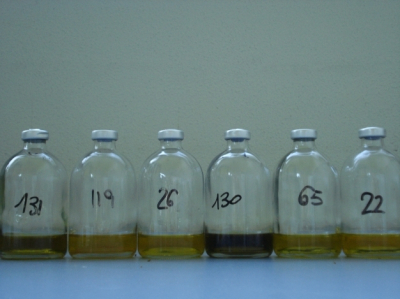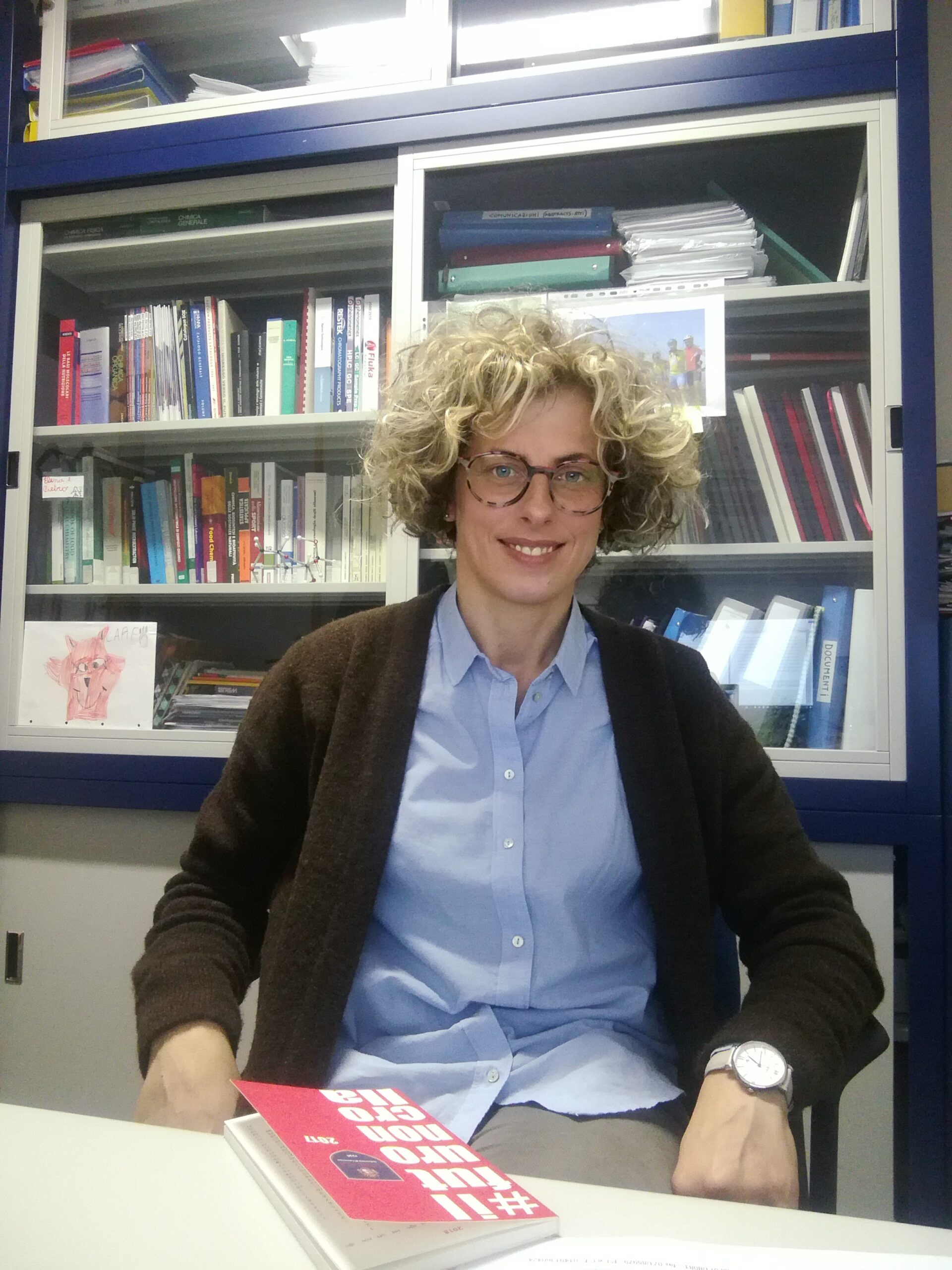Polyphenols in olive oil
An interview with Dennis Fiorini, Professor at the University of Camerino. All there is to know about a quantitative procedure employing high-performance liquid chromatography coupled with diode array detection to determine whether a given oil is entitled to a health claim. An investigation carried out by Massimo Ricciutelli, Shara Marconi, Maria Chiara Boarelli, Giovanni Caprioli, Gianni Sagratini, Roberto Ballini and Dennis Fiorini

Let’s start off from the abstract of her most recent paper, “Olive oil polyphenols: A quantitative method by high-performance liquid-chromatography-diode-array detection for their determination and the assessment of the related health claim.”
In order to assess if an extra virgin olive oil (EVOO) can be acknowledged with the health claim related to olive oil polyphenols (EU Reg. 432/2012), a new method to quantify these species in EVOO, by means of liquid–liquid extraction followed by HPLC-DAD/MS/MS of the hydroalcoholic extract, has been developed and validated. Different extraction procedures, different types of reverse-phase analytical columns (Synergi Polar, Spherisorb ODS2 and Kinetex) and eluents have been tested. The chromatographic column Synergi Polar (250 × 4.6 mm, 4 μm), never used before in this kind of application, provided the best results, with water and methanol/isopropanol (9/1) as eluents. The method allows the quantification of the phenolic alcohols tyrosol and hydroxytyrosol, the phenolic acids vanillic, p-coumaric and ferulic acids, secoiridoids derivatives, lignans, pinoresinol and acetoxypinoresinol and the flavonoids luteolin and apigenin. This new method has been applied to 20 commercial EVOOs belonging to two different price range categories (3.78–5.80 euro/L and 9.5–25.80 euro/L) and 5 olive oils. The obtained results highlight that acetoxypinoresinol, ferulic acid, vanillic acid and the total non-secoiridoid phenolic substances resulted to be significantly higher in HEVOOs than in LEVOOs (P = 0.0026, 0.0217, 0.0092, 0.0003 respectively). For most of the samples analysed there is excellent agreement between the results obtained by applying the HPLC method adopted by the International Olive Council and the results obtained by applying the presented HPLC method. Results obtained by HPLC methods have been also compared with the ones obtained by the colorimetric Folin-Ciocalteu method.
Prof. Dennis Fiorini, where did you get the idea for this line of research?
One of the main aims of the research project, framework of the investigation we are speaking about, was to find a way to highlight the virtues of select extra virgin olive oils. Polyphenols are fundamental for this purpose, and must always be taken in due account when assessing the quality of oil. These compounds give it greater stability, because they protect it from oxidation; they are also responsible for the pungency and bitterness of olive oil, and possess health properties that have been acknowledged by the EFSA, the European Food Safety Authority. As a consequence, the European Union has authorised a health claim stating that “Olive oil polyphenols contribute to the protection of blood lipids from oxidative stress” when the oil in question contains at least 5 mg of polyphenols, or better, hydroxityrosol and hydroxytyrosol and its derivatives (e.g. the oleuropein complex and tyrosol) per 20 g of olive oil. In other words, the threshold level is 250 mg polyphenols per kg of oil. The health claim must be accompanied with the additional information stating that the beneficial effect is obtained with a daily intake of 20 g of olive oil. It is worth mentioning however that, for a variety of reasons, it can be difficult to quantify these compounds. Oil polyphenols are a rather complex mixture of compounds that are hard to separate using the prevailing chromatography techniques and for which no commercial standards are available. Against this background, we felt the need to develop a new method whereby, by assessing various chromatographic conditions, it would be possible to better separate these compounds and by using an appropriate quantifying procedure, limit the range of error.
Is this an isolated investigation, or is your research group continuing to work in this sector? And if so, in what direction?
This investigation is part of a more extensive research programme called “AEVOO: Authentication of Extra Virgin Olive Oil” (FAR 2014/2015 grant, University of Camerino). This project has a number of goals, including the identification of new quality markers for oil, and of procedures aimed at highlighting the virtues of top-of-the-range oils made in our region (Marche) based on their chemical and biological characterisation. Another goal is the definition of simple, versatile and reliable analytical methods to analyse molecules of interest for the authentication and enhancement of the features of olive oil.
What is the practical use of this interesting investigation? What are its applications in analysis labs? Its potential use by technicians working in this sector? The benefits for the consumers?
The analytical procedure described in this paper relies on instruments present in most laboratories. All you need is a high-performance liquid chromatographer equipped with a diode-array detector (HPLC-DAD) in order to establish whether an oil can bear the health claim mentioned previously, hence allowing its producer to highlight its benefits and virtues. Knowing exactly the content and composition of the phenols in a given oil can also help the producer create blends having appropriate levels of these its precious compounds. Lab technicians can use a relatively simple procedure, and instruments present in most laboratories, to perform analyses giving excellent results even from a quantitative point of view. Finally, the consumer gets more information on the health benefits of the oil, although it should be stressed that no class of molecules alone can ensure that the oil in question is of a superior quality.
After defining this procedure, you purchased and analysed various types of oil to compare their phenol content. What were the results of your observations?
We decided to apply this procedure to oil samples purchased on the retail market. The purpose was to highlight possible differences in the quantity and quality of polyphenols in extra virgin olive oils belonging either to the upper price range (10-26 euro per litre) (HEVOO) or the lower one (4-6 euro per litre) (LEVOO) and verify how many of them had a oil polyphenol content that would entitle them to the EU health claim. This analysis had a further goal, namely to respond to the consumers’ most frequent questions, i.e. “Does the price of the oil really reflect its quality? How? And to what extent?” As regards the number of oils that could be acknowledged with the health claim, because they contained phenols (tyrosol, hydroxytyrosol and secoiridoids) at concentrations higher than 250 mg kg-1, no significant differences were observed between the two classes of oil: 4 of the 10 HEVOO analysed and 3 of the 10 LEVOO exceeded the threshold level. The overall polyphenol content was on average greater in the HEVOO class (261 mg kg-1) than in the LEVOO one (245 mg kg-1), but the difference was not significant from a statistical point of view. The greatest and most significant differences concerned specific molecules and minor phenol compounds, such as vanillic acid, as well as the overall level of non-secoiridoid phenolic substances, both significantly more abundant in the high-priced oils. These molecules might therefore be employed as markers for the quality of olive oil, but more experiments on a greater number of samples are needed to support this hypothesis. It would also be interesting to investigate the reason and factors (genetic, technological, seasonal or environmental) behind their greater abundance in premium oils.
 Dennis Fiorini
Dennis Fiorini
Journal of Chromatography A, Volume 1481, 20 January 2017, Pages 53–63
“Polifenoli dell’olio di oliva: un metodo quantitativo attraverso cromatografia liquida ad alta performance e rivelazione spettrofotometrica con matrice di diodi per l’attribuzione del relativo claim salutistico”.
Massimo Ricciutelli, Shara Marconi, Maria Chiara Boarelli, Giovanni Caprioli, Gianni Sagratini, Roberto Ballini, Dennis Fiorini*
*Corresponding author e-mail: dennis.fiorini@unicam.it
School of Science and Technology, Chemistry Division, University of Camerino, V. S. Agostino 1, I-62032 Camerino, MC, Italy
Photo by Lorenzo Cerretani
To comment you have to register
If you're already registered you can click here to access your account
or click here to create a new account


Comment this news